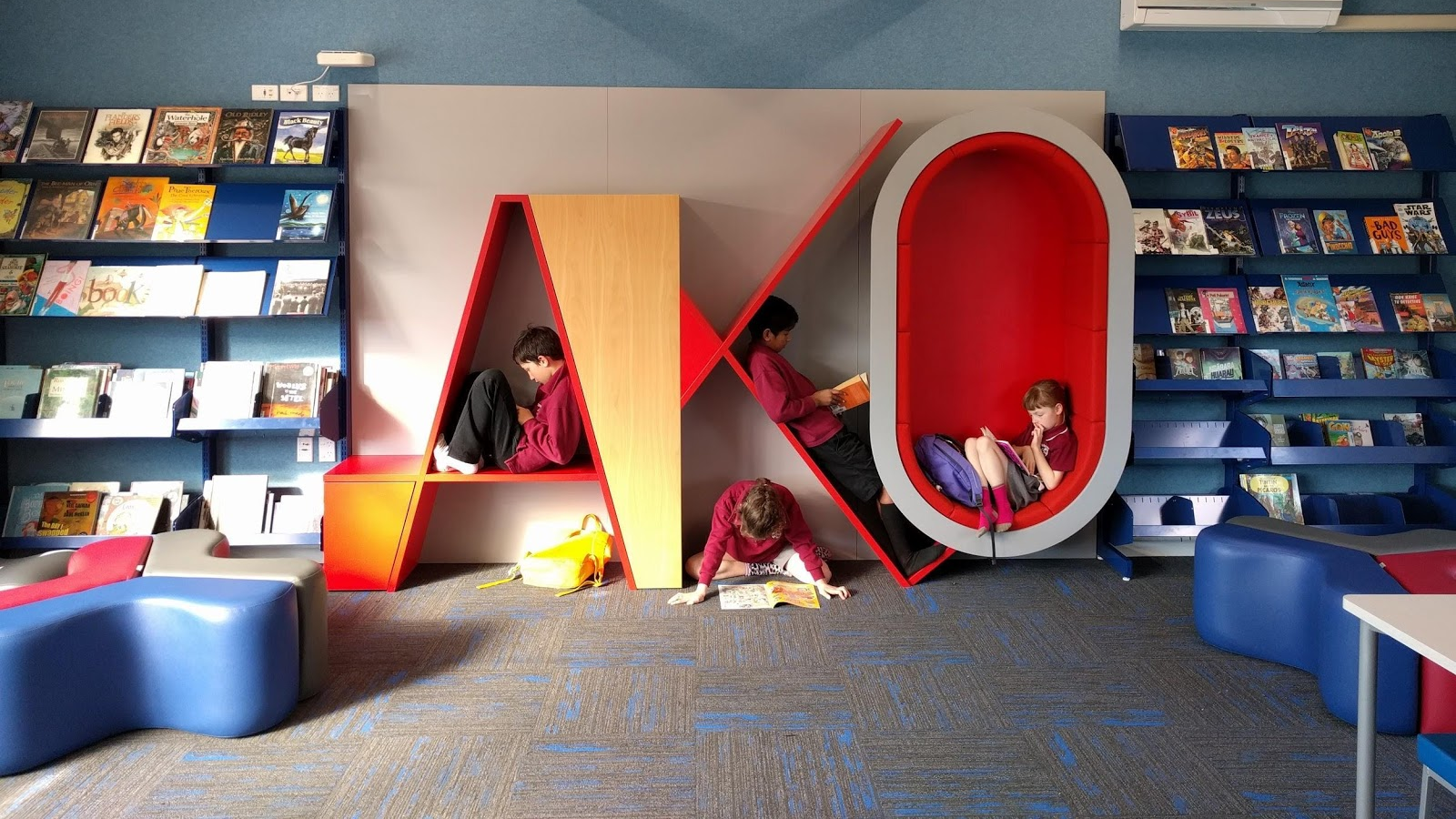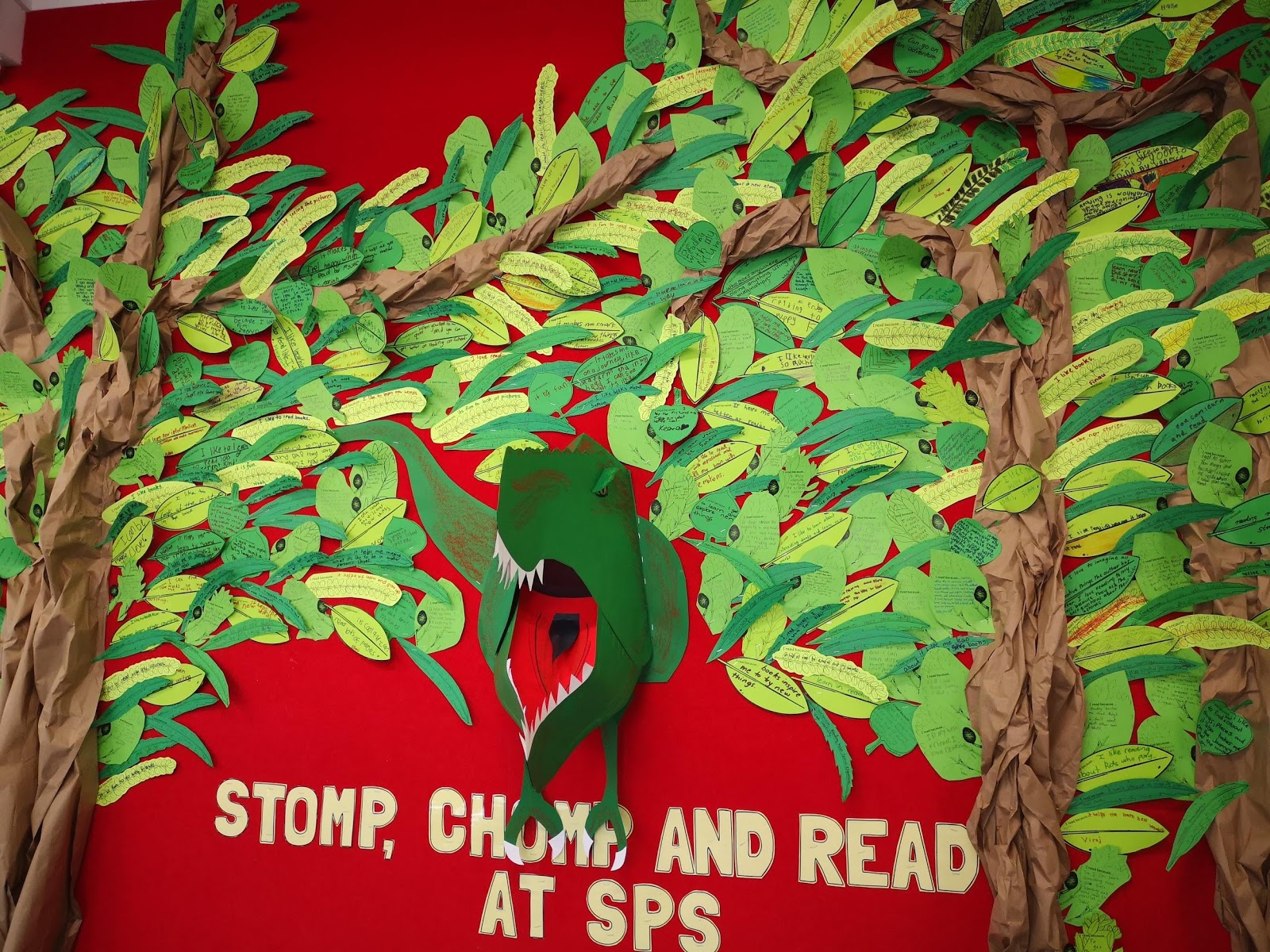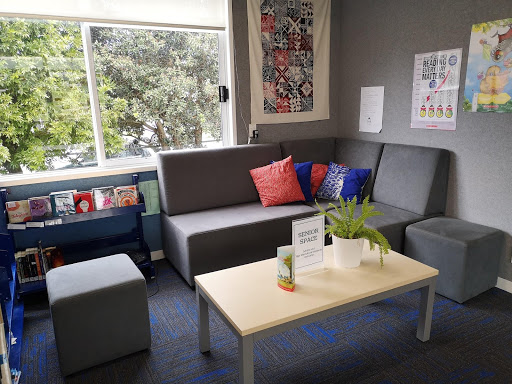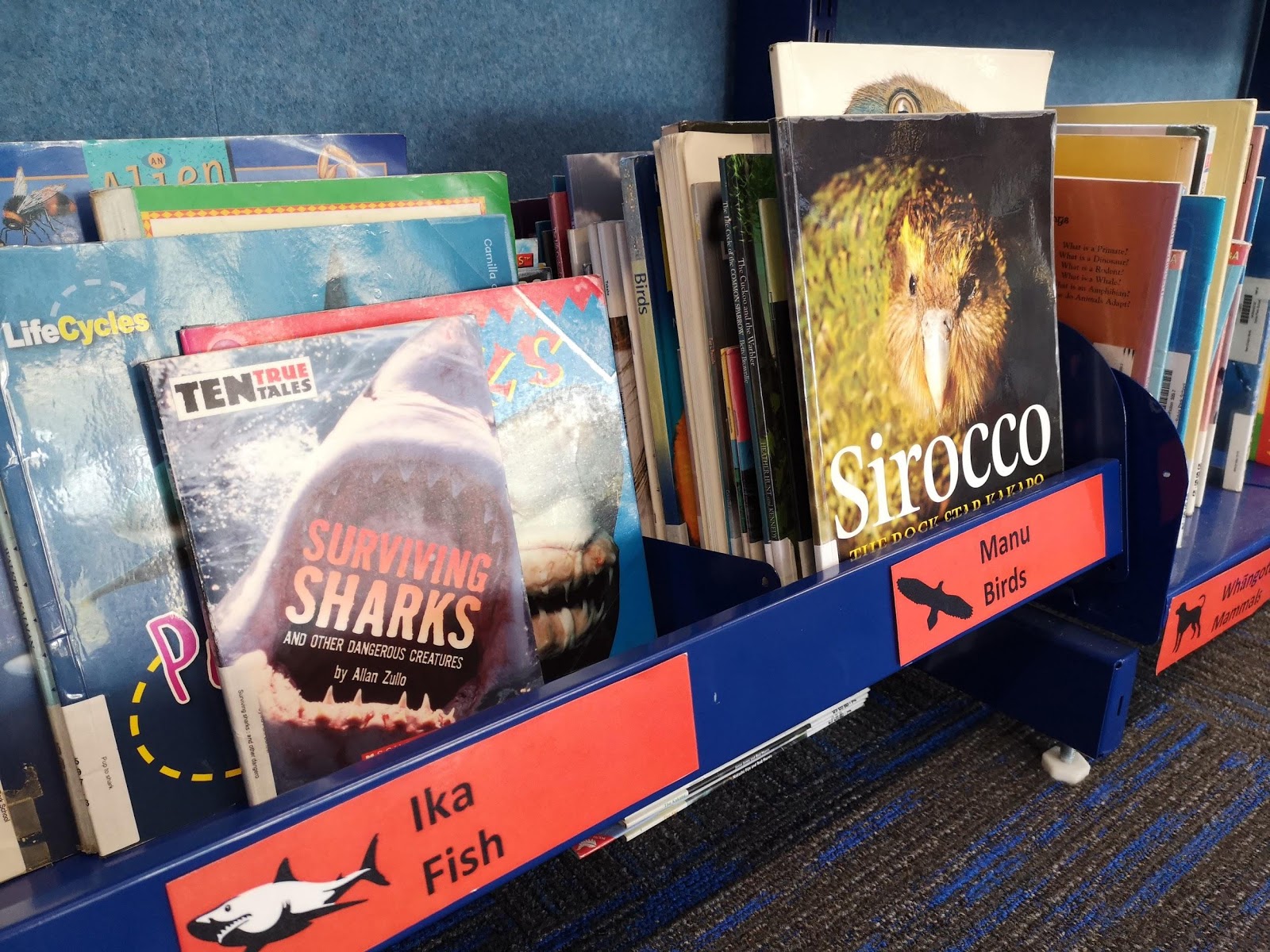For this month’s School Librarian of Aotearoa, we are delighted to introduce Esther Casey, who teaches in Te Puna Ngoi, the library at Sylvia Park School. She is a lover of beautiful books, and believes all students should have access to a huge variety of literature.

The best job in the the world
I teach in Te Puna Ngoi, our library at Sylvia Park School, it’s the best job in the world, and I get to work with the best kids ever. I’ve been working here since we started planning for a new library about five years ago.
I’ve always believed in the importance of reading for pleasure and as a classroom teacher, with the increasing use of digital information, I realised how essential critical thinking and information literacy skills are. I worked at the National Library in Auckland for a while and met the most inspirational people there, and many librarians doing the mahi in schools. I was inspired by their enthusiasm and the creativity the librarians could bring to their work.
My daily inspiration comes from our students, their questions and curiosities and their enjoyment of a beautiful book. Or their passionate response when a story gives them a challenge! I even love their honest response when they disagree with something or just don’t like a book. The classroom teachers are amazing at weaving storytelling and critical thinking into learning and it is exciting to work alongside them and make sure they always have access to the best content to support them.
My daily inspiration comes from our students, their questions and curiosities and their enjoyment of a beautiful book.
‘Joyful access to a huge variety of literature’
The books that work best with kids are, of course, those they can relate to – characters that look like them, do the things they do, or that they connect with in some way. But I think good books need to do more by challenging students with fresh perspectives, vocabulary or content.
If we want kids to read, we need to make sure that every child has joyful access to a huge variety of literature. A targeted school library collection that is promoted and used and accessible is so important! We know that reading for pleasure has a positive impact on many aspects of their lives, and our best opportunity to build the reading habit is at school.
If we want kids to read, we need to make sure that every child has joyful access to a huge variety of literature.
When we work well as a team of teachers, librarians and whānau, we have the best chance of getting kids finding reading material that they will love.

Puppets and connections at Te Puna Ngoi
My day often starts by connecting with some of the teachers visiting that day, especially if we are planning to do something different. I try to keep my lessons aligned to the current whole school inquiry and it is good to know what the students are curious about. Before the library opens is also the best time to find books teachers have asked for and get those to them.
Te Puna Ngoi is open half an hour before and after school so that time is often spent talking with students and whānau.
During the day I have a steady stream of classes visiting. I love the variety of my job where I can go from showing the juniors some really great picture books using puppets, to teaching our Year 7 and 8s critical thinking about digital information, with lots of book recommendations in between. I usually have some time each day for collection development or inquiry support as well.
Lunchtimes can be full on. We have the kids who are reading but also games, clubs and a wonderful team of students helping to manage books and run groups. Lunchtimes are usually a fun buzzy community of learners.
AKO in a new library

Te Puna Ngoi is made up of two prefab classes with the middle wall knocked out so it is a long space that is easily divisible into two parts. We try to keep all the noisy stuff down one end so that there is always space for those who are looking for some peace. We have a seniors area in the quieter end too. Only adults and Year 7 and 8s can use that space and it is not visible from the doors or the area I tend to be most. This high trust space works really well for us and it brings students inside to play cards, or just to chat, then they ‘accidentally’ might find some books.

As much of our shelving as we can displays books face out. Our chapter books are in genres and then in series, or authors, or however I know the students will look for them. We change the way we group chapter books fairly regularly, depending on the types of things students ask for.
Our non-fiction is mostly face out too, and grouped in ways that respond to the things students are looking for. I recently decided to stop putting dewey spine labels on our non-fiction, it makes little sense to students and there are better real life skills I can spend my time teaching. That might not work for all school libraries but it has made the books much more accessible for our kids.
I recently decided to stop putting dewey spine labels on our non-fiction, it makes little sense to students and there are better real life skills I can spend my time teaching.

One of our favourite collections in Te Puna Ngoi is displayed on our Writers’ Wall. These are all books or book inspired art made by our students or classes. We wanted to give students an authentic audience for their writing and we really celebrate it when a student makes a book that we can add to this collection. All their books are catalogued so the authors can find their names and their books alongside other, perhaps more well known, writers.

Targeting readers through new books
We do lots of different things to try and target different age groups at different times. Some of the things we have done this year are the Hell Reading Challenge, Book Week, Reading Together, public library promotions and reading games. We have also had visits from two wonderful authors – Vasanti Unka and David Riley – who both got lots of books into lots of hands.
The most regular and continuously successful book promotion though is probably just the purchase of new books that I know will be just right for our students and then making sure they know that they are there. I do book reviews, I introduce new books during class visits, I save some for ‘just the right reader’, sometimes we show new books or magazines during our school wide morning news channel, book displays, all of those kinds of things.
Early chapter books needed
Two gaps I am always trying to fill are quality early chapter books that are scary or about sports, especially girls in sports, and especially with Māori or Pacific characters. We love funny books and fantasy books at our school and are lucky to have a beautiful big range but our sports and horror genre shelves need a big boost!
This week I have been reading The Sad Little Fact by Jonah Winter to our Year 5 to 8’s. It followed on beautifully from the last few weeks of teaching the CRAAP test (helping students judge currency, relevance, authority, accuracy and purpose of reading materials) and gave me an opportunity to promote our Sophisticated Picture Book collection. Several classes clapped at the end – they love a good conspiracy theory!
I also showed our bilingual class Te Rātaka a Tama Hūngoingoi, the Diary of a Wimpy Kid in te Reo Māori. That caused huge excitement and they are very keen to read it.

Esther Casey
Esther has worked in lots of other wonderful places but now loves being Teacher Librarian at Sylvia Park School, a full primary in Mt Wellington, Auckland. She gets the biggest buzz out of kids recommending books to her or when teachers say the students challenged them about the reliability of a resource.



